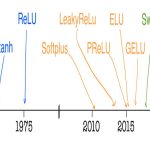Exception handling in Spring boot applications
A Generic library for exception handling in Spring Boot applications, implementing specification Problem Details (RFC7807) for HTTP APIs. Requires Java 17+, Spring boot 3+ and Jakarta EE 10. Source code and detailed documentation available on Github at spring-boot-problem-handler
Introduction
Exception handling is a cross-cutting concern, should be kept separate from business logic and applied declaratively.
A common practice is to create some custom exception classes like some ServiceException and errors code enums, wherein each instance of error code enum represents an error scenario. An exception class could be either checked or unchecked, but handling of exception is no different. For almost all error scenarios unchecked exception can serve the purpose really well, saving developers from explicitly writing try catch blocks and throws clauses. Though not recommended but limited checked exceptions can be created and thrown from methods where calling programs can take some recovery measures.
Standard way of handling exceptions in Spring is @ControllerAdvice using AOP, following the same principles spring-boot-problem-handler makes available everything related to exception handling for both Spring Web (Servlet) and Spring Webflux (Reactive) Rest applications, so there is no need to define any custom exceptions or custom ControllerAdvice advices into consumer application, all can be done with zero custom code but by specifying error details in properties file.
Installation
Current version: 1.0
Add the spring-boot-problem-handler jar to application dependencies. That is all it takes to get a default working exception handling mechanism in a Spring boot application.
<properties>
<spring-boot-problem-handler.version>1.0</spring-boot-problem-handler.version>
</properties><dependency>
<groupId>io.github.officiallysingh</groupId>
<artifactId>spring-boot-problem-handler</artifactId>
<version>${spring-boot-problem-handler.version}</version>
</dependency>It does all hard part, A lot of advices are out of box available which are autoconfigured as ControllerAdvice‘s depending on the jars in classpath of consumer application. Even for exceptions for which no advices are defined, respective error response can be specified by messages in properties file, elaborated in Usage section. New custom advices could be required only in cases where it is required to take some data from exception instance to dynamically derive Error key or to use this data to resolve any placeholders in error message. In such cases consumer application can define their own custom ControllerAdvice‘s, Any existing advice can be referred to weave the custom advice into the framework.
A default set of ControllerAdvice‘s are always configured irrespective of the fact that whether the application is Spring Web or Spring Webflux, but few advices are conditional such as for Handling Security, OpenAPI and Dao related exceptions, which are elaborated in their respective sections.
Features
- A lot of inbuilt
ControllerAdvice‘s out of box available to handle most common exceptions. - Extendable to add more advices or override existing advices in consumer applications, weaving them into aligned framework for exception handling.
- Customizable Error response structure.
- Provides mechanism to specify error response for any kind of exception without defining any
ControllerAdvice. - Works with both Spring Web and Spring Webflux applications.
- Customizable to override the default attributes in error response by overriding the same in
propertiesfile. - The autoconfigured advices can be disabled or overridden or extended as per needs.
Controller Advices
General advices recommended for all Spring Rest services
These advices are autoconfigured as either bean of type ProblemHandlingWeb or ProblemHandlingWebflux depending on whether application is type Spring Web or Spring Webflux respectively.
Dao advices
These advices are autoconfigured as a bean DaoExceptionHandler if following conditions are true
problem.dao-advice-enabledis not set tofalse. Its default value istrue- If using relation databases then
spring-data-jpajar is detected in classpath and eitherspring.datasource.urlorspring.r2dbc.urlis configured - If using MongoDB then
spring-data-mongodbjar is detected in classpath andspring.data.mongodb.uriis configured
Database type must be specified in application.properties in case application is using some relational database, it is used to autoconfigure ConstraintNameResolver to extract database constraint name from exception message to derive Error key when database constraint violation exceptions are thrown.
Security advices
These advices are autoconfigured as a bean SecurityExceptionHandler if following conditions are true
spring-security-configjar is detected in classpathproblem.security-advice-enabledis not set tofalse. Its default value istrue
For Spring Web applications
ProblemAuthenticationEntryPoint and ProblemAccessDeniedHandler are autoconfigured as authenticationEntryPoint and accessDeniedHandler beans respectively, which need to configured in application’s Spring security configuration. Refer to example SecurityConfiguration
For Spring Webflux applications
ServerAuthenticationEntryPoint and ServerAccessDeniedHandler are autoconfigured as authenticationEntryPoint and accessDeniedHandler beans respectively, which need to configured in application’s Spring security configuration. Refer to example SecurityConfiguration
OpenAPI validation advice
These advices are autoconfigured as bean OpenApiValidationExceptionHandler if following conditions are true
swagger-request-validator-spring-webmvc-2.34.x.jaris detected in classpath- At least one of
problem.open-api.req-validation-enabledorproblem.open-api.res-validation-enabledis set astrue - A valid OpenAPI Spec is provided as config
problem.open-api.path
NOTE: It is available for Spring Web applications only, not for Spring Webflux application
Configurations
The NoHandlerFoundAdviceTrait in addition also requires the following configuration
spring.mvc.throw-exception-if-no-handler-found=trueWhile using Dao advices, set database platform as follows, set value as per the database being used.
spring.jpa.database=POSTGRESQLRefer to Database for the list of database vendors such as DB2, DERBY, H2, HANA, HSQL, INFORMIX, MYSQL, ORACLE, POSTGRESQL, SQL_SERVER, SYBASE
NOTE: ConstraintNameResolver is implemented for Postgres, SQL Server and MongoDB only as of now.
If any other relational database is used then respective ConstraintNameResolver need to be implemented and defined as a bean.
Make sure to disable the ErrorMvcAutoConfiguration as follows
@EnableAutoConfiguration(exclude = ErrorMvcAutoConfiguration.class)or in application.properties as follows
spring.autoconfigure.exclude=org.springframework.boot.autoconfigure.web.servlet.error.ErrorMvcAutoConfigurationEnable Spring boot Problem details support to return similar error response in case spring-boot-problem-handler throws some exception while handling an exception
spring.mvc.problemdetails.enabled=trueSpecify message source bundles as follows. Make sure to include i18/problems bundled in the library, as it has default messages for certain exception. And it should be last in the list of basenames, so that it has lowest priority and any default messages coming from problems.properties can be overridden by specifying the property with different value in application’s errors.properties
spring.messages.basename=i18n/errors,i18/problems
spring.messages.use-code-as-default-message=trueIf use-code-as-default-message is set to false and the message is not found in any of the properties file then it will throw NoSuchMessageException complaining that no message is found for given code. So if it is intended to enforce all messages for exceptions to be specified in properties file, set it to false, but not recommended.
To be on safer side, it’s recommended to keep it true, in that case if some message is not found, the message key is taken as its value, which can be updated later into properties file, once noticed.
Problem Properties
Following are the configurations to customize default behaviour of spring-boot-problem-handler.
problem.enabled=true
problem.type-url=http://localhost:8080/problems/help.html
problem.debug-enabled=false
problem.stacktrace-enabled=false
problem.cause-chains-enabled=false
#problem.jackson-module-enabled=false
#problem.dao-advice-enabled=false
#problem.security-advice-enabled=false
problem.open-api.path=/oas/api.json
problem.open-api.exclude-patterns=/api/states,/api/states/**,/api/employees,/api/employees/**,/problems/**
problem.open-api.req-validation-enabled=true
problem.open-api.res-validation-enabled=falseproblem.enabled: To enable or disable autoconfigurations, default istrue.In case consumer applications are interested to avail advices but want full control over configurations, then it can be set tofalseand required advices can be configured as Spring beans similar to how they are autoconfigured.problem.type-url: The baseURLfor Help page describing errors. For different exceptions respective code for exception is appended to it followed by a#problem.debug-enabled: To enable or disable debugging i.e. to get the message resolvers to specify the error messages inpropertiesfiles. Elaborated in Usage section. Default isfalse.problem.stacktrace-enabled: To enable or disable Stacktraces, default isfalse. Should only be set totruefor debugging purposes only on local or lower environments, otherwise the application internals may be exposed.problem.cause-chains-enabled: To enable or disable cause chains, default isfalse. Elaborated in Usage section.problem.jackson-module-enabled: To enable or disable Jackson Problem Module autoconfiguration, default istrue. Set it tofalsein case consumer application need to define Serialization/Deserialization explicitly. Or ifGsonis to be used instead ofJackson. If disabled the required serializers need to be defined by consumer application.problem.dao-advice-enabled: To enable or disable Dao advice autoconfiguration, default istrue. Set it tofalsein case consumer application need to define Dao advice configurations explicitly.problem.security-advice-enabled: To enable or disable Security advice autoconfiguration, default istrue. Set it tofalsein case consumer application need to define Security advice configurations explicitly.problem.open-api.path: OpenAPI Specification path. Ideally should be in classpath and start with/. If not specified, OpenAPI Specification validation is not enabled.problem.open-api.exclude-patterns: List ofURIAnt patterns to be excluded from OpenAPI specification validation. Default is empty.problem.open-api.req-validation-enabled: To enable or disable OpenAPI specification validation for request, default isfalse.problem.open-api.res-validation-enabled: To enable or disable OpenAPI specification validation for response, default isfalse.
Error Key
The main concept behind specifying the error attributes in properties file is Error key, which is mandatory to be unique for each error scenario. It is either derived or specified by application while throwing exception and used to externalize the error attributes in properties file.
For example if error key for some exception is some.error.key, then error response attributes can be specified in properties file as follows.
code.some.error.key=some-error
title.some.error.key=Some Error
detail.some.error.key=Something has gone wrong, please look into the logs for detailsIn case of exceptions for which advices are not defined, status also need to be specified in properties file as follows. It is elaborated in below sections.
status.some.error.key=400WARNING : The derived Error keys may change in cases of code refactoring. Because derived Error keys may contain the class names, method names and class property names or database constraint or index name. So in such case verify and do necessary updates in error message properties files.
- When OpenAPI Spec is changed, the error keys for OpenAPI spec validation errors may change.
- When controller method name changes or controller argument Object class name or any of its property name changes then
jakarta.validation.*violation error keys may change. - When database constraint name or index name changes then any
DuplicateKeyExceptionorDataIntegrityViolationExceptionerror key may change.
Error response
Following is an example response body for an error.
{
"type":"http://localhost:8080/problems/help.html#XYZ-001",
"title":"Internal Server Error",
"status":500,
"detail":"A job instance already exists and is complete for parameters={'date':'{value=2023-08-13, type=class java.time.LocalDate, identifying=true}'}. If you want to run this job again, change the parameters.",
"instance":"/api/myjob",
"method":"PUT",
"timestamp":"2023-08-14T20:45:45.737227+05:30",
"code":"XYZ-001"
}Response Header when service is configured for Json HttpMessageConverters
content-type: application/problem+jsonResponse Header when service is configured for XML HttpMessageConverters
content-type: application/problem+xmlDescription
type: AURIreference that identifies the problem type. When dereferenced, it provides human-readable documentation for this error. If not setabout:blankis taken as default.title: A short, human-readable summary of the error such asBad Request.status:- The HTTP status code, int value such as500.detail: A human-readable explanation specific to this occurrence of error.instance: The APIURIreference where this error has occurred.method:HttpMethodfor giveninstancewhere this error has occurred.timestamp:-OffsetDateTimeof occurrence of this error.code: UniqueStringcode for this error, should not contain spaces or special characters except_and-. Used intype. Commonly used to set unique codes for different business error scenarios.
Message resolvers
To know how to define the error attributes in properties file, enable debugging as follows.
problem.debug-enabled=trueNow the error response itself would contain the resolvers for respective attributes, as follows. codes in the resolvers could be one or multiple.
For example in case of ConstraintViolationException codes would be multiple in order of most specific towards least specific.
{
"type":"http://localhost:8080/problems/help.html#XYZ-001",
"title":"Internal Server Error",
"status":500,
"detail":"A job instance already exists and is complete for parameters={'date':'{value=2023-08-13, type=class java.time.LocalDate, identifying=true}'}. If you want to run this job again, change the parameters.",
"instance":"/api/myjob",
"method":"PUT",
"timestamp":"2023-08-14T20:51:43.993249+05:30",
"code":"XYZ-001",
"codeResolver":{
"codes":[
"code.org.springframework.batch.core.repository.JobInstanceAlreadyCompleteException"
],
"defaultMessage":"500",
"arguments":null
},
"titleResolver":{
"codes":[
"title.org.springframework.batch.core.repository.JobInstanceAlreadyCompleteException"
],
"defaultMessage":"Internal Server Error",
"arguments":null
},
"detailResolver":{
"codes":[
"detail.org.springframework.batch.core.repository.JobInstanceAlreadyCompleteException"
],
"defaultMessage":"A job instance already exists and is complete for parameters={'date':'{value=2023-08-13, type=class java.time.LocalDate, identifying=true}'}. If you want to run this job again, change the parameters.",
"arguments":null
},
"statusResolver":{
"codes":[
"status.org.springframework.batch.core.repository.JobInstanceAlreadyCompleteException"
],
"defaultMessage":"500",
"arguments":null
}
}Respective codes for corresponding attribute can be copied and message can be specified for same in properties file.
NOTE: org.springframework.batch.core.repository.JobInstanceAlreadyCompleteException i.e. fully qualified name of exception is the Error key in above case.
This scenario also covers all the exceptions for which advices are not defined. But additionally HttpStatus need to be specified in properties file as it has not been specified anywhere in code because ControllerAdvice is not defined, if status not given even in properties file HttpStatus.INTERNAL_SERVER_ERROR is taken as default.
Hence the error response can be specified as follows.
status.org.springframework.batch.core.repository.JobInstanceAlreadyCompleteException=409
code.org.springframework.batch.core.repository.JobInstanceAlreadyCompleteException=Some code
title.org.springframework.batch.core.repository.JobInstanceAlreadyCompleteException=Some title
detail.org.springframework.batch.core.repository.JobInstanceAlreadyCompleteException=Some message detailsTo minimize the number of properties following defaults are taken if HttpStatus is specified as status.<error key> property.
- Code is taken as specified
HttpStatus‘s int code e.g. ifHttpStatusis given asEXPECTATION_FAILEDthen the Code default would be417 - Title is taken as specified
HttpStatus‘s reason phrase e.g. ifHttpStatusis given asEXPECTATION_FAILEDthen the Title default would beExpectation Failed - Detail default is taken from thrown exception’s
exception.getMessage().
NOTE: status.<error key> property is considered only for exceptions where no explicit advice is defined, otherwise HttpStatus is specified in the java code.
Creating and throwing exceptions
Apart from exceptions thrown by frameworks or java, every application need to throw custom exceptions. ApplicationProblem and ApplicationException classes are available in the library to throw an unchecked or checked exception respectively. Problems is the central static helper class to create Problem instances and throw either checked or unchecked exceptions, as demonstrated below. It provides multiple fluent methods to build and throw exceptions.
The simplistic way is to just specify a unique error key and HttpStatus.
throw Problems.newInstance("sample.problem").throwAble(HttpStatus.EXPECTATION_FAILED);Error response attributes code, title and detail are expected from the message source (properties file) available as follows.
Notice the Error key sample.problem in following properties.
code.sample.problem=AYX123
title.sample.problem=Some title
detail.sample.problem=Some message detailsBut exceptions come with some default attributes as follows, to minimize the number of properties required to be defined in properties file
If the messages are not found in properties files, defaults are taken as follows.
- Code is taken as specified
HttpStatus‘s int code e.g. ifHttpStatusis given asEXPECTATION_FAILEDthen the Code default would be417 - Title is taken as specified
HttpStatus‘s reason phrase e.g. ifHttpStatusis given asEXPECTATION_FAILEDlike the Title default would beExpectation Failed - Detail default is taken as thrown exception’s
exception.getMessage()
There are multiple other methods available while creating and throwing exceptions in Problems, for details refers to its source code and java docs.
throw Problems.newInstance("sample.problem")
.defaultDetail("Default details if not found in properties file with parma1: {0} and param2: {1}")
.detailArgs("P1", "P2")
.cause(new IllegalStateException("Artificially induced illegal state"))
.throwAble(HttpStatus.EXPECTATION_FAILED); // .throwAbleChecked(HttpStatus.EXPECTATION_FAILED)The above code snippet would throw unchecked exception, though not recommended but to throw checked exception,
use throwAbleChecked as terminal operation as highlighted in java comment above.
The attributes corresponding to error key sample.problem can be provided in properties file as follows.
code.sample.problem=404
title.sample.problem=Some title
detail.sample.problem=Some details with param one: {0} and param other: {1}Sometimes it is not desirable to throw exceptions as they occur, but to collect them to throw at a later point in execution.
Or to throw multiple exceptions together. That can be done as follows.
Problem problemOne = Problems.newInstance("sample.problem.one").get();
Problem problemTwo = Problems.newInstance("sample.problem.two").get();
throw Problems.throwAble(HttpStatus.MULTI_STATUS, problemOne, problemTwo);HttpStatus can also be set over custom exception as follows, the same would reflect in error response and other error attributes default would be derived by given HttpStatus attribute in @ResponseStatus
@ResponseStatus(HttpStatus.NOT_IMPLEMENTED)
private static final class MyException extends RuntimeException {
public MyException() {
}
public MyException(final Throwable cause) {
super(cause);
}
}Stack traces
Set following property to true to get the stacktrace in error response, should only be used on local for debugging purpose and strictly prohibited elsewhere as it may expose application internals.
problem.stacktrace-enabled=trueExample response
{
"type":"http://localhost:8080/problems/help.html#XYZ-001",
"title":"Internal Server Error",
"status":500,
"detail":"A job instance already exists and is complete for parameters={'date':'{value=2023-08-13, type=class java.time.LocalDate, identifying=true}'}. If you want to run this job again, change the parameters.",
"instance":"/api/myjob",
"method":"PUT",
"timestamp":"2023-08-14T21:01:56.378749+05:30",
"code":"XYZ-001",
"statcktrace":[
"org.springframework.batch.core.repository.support.SimpleJobRepository.createJobExecution(SimpleJobRepository.java:159)",
"java.base/jdk.internal.reflect.NativeMethodAccessorImpl.invoke0(Native Method)",
"java.base/jdk.internal.reflect.NativeMethodAccessorImpl.invoke(NativeMethodAccessorImpl.java:77)",
"java.base/jdk.internal.reflect.DelegatingMethodAccessorImpl.invoke(DelegatingMethodAccessorImpl.java:43)",
"java.base/java.lang.reflect.Method.invoke(Method.java:568)",
".......",
"..............",
"org.apache.tomcat.util.threads.ThreadPoolExecutor$Worker.run(ThreadPoolExecutor.java:659)",
"org.apache.tomcat.util.threads.TaskThread$WrappingRunnable.run(TaskThread.java:61)",
"java.base/java.lang.Thread.run(Thread.java:833)"
]
}Cause chains
An exception may have a cause, which in tern may also have another and so on. The complete cause chain can also be viewed in error response, again it should just be used for local debugging purposes only.
problem.cause-chains-enabled=trueExample response
{
"type":"http://localhost:8080/problems/help.html#XYZ-001",
"title":"Not Implemented",
"status":501,
"detail":"expected",
"instance":"/problems/handler-throwable-annotated-cause",
"method":"GET",
"timestamp":"2023-08-14T22:09:56.284473+05:30",
"code":"XYZ-001",
"cause":{
"code":"501",
"title":"Not Implemented",
"detail":"Something has gone wrong",
"cause":{
"code":"501",
"title":"Not Implemented"
}
}
}Customizations
Customize error response
The error response is totally customizable by defining a bean of type ErrorResponseBuilder demonstrated as follows.
- If it is required to customize the error response attribute names, it can be done by implementing custom serialization for
ProblemDetailusing Jackson Mixin. - Or define custom error response class as follows.
@Getter
@AllArgsConstructor(staticName = "of")
public class CustomErrorResponse {
private HttpStatus status;
private String message;
}- And define custom error response builder class bean to return the custom error response as follows.
For Spring Web applications
@Component
class CustomErrorResponseBuilder implements ErrorResponseBuilder<NativeWebRequest, ResponseEntity<CustomErrorResponse>> {
@Override
public ResponseEntity<CustomErrorResponse> buildResponse(final Throwable throwable, final NativeWebRequest request,
final HttpStatus status, final HttpHeaders headers, final Problem problem) {
CustomErrorResponse errorResponse = CustomErrorResponse.of(status, problem.getDetail());
ResponseEntity<CustomErrorResponse> responseEntity = ResponseEntity
.status(status).headers(headers).contentType(MediaTypes.PROBLEM).body(errorResponse);
return responseEntity;
}
}For Spring Webflux applications
@Component
class CustomErrorResponseBuilder implements ErrorResponseBuilder<ServerWebExchange, Mono<ResponseEntity<CustomErrorResponse>>> {
@Override
public Mono<ResponseEntity<CustomErrorResponse>> buildResponse(final Throwable throwable, final ServerWebExchange request,
final HttpStatus status, final HttpHeaders headers, final Problem problem) {
CustomErrorResponse errorResponse = CustomErrorResponse.of(status, problem.getDetail());
ResponseEntity<CustomErrorResponse> responseEntity = ResponseEntity
.status(status).headers(headers).contentType(MediaTypes.PROBLEM).body(errorResponse);
return Mono.just(responseEntity);
}
}Customize or Override advices
Any autoconfigured advice can be customized by overriding the same and providing a different implementation. Make sure to add annotation @Order(Ordered.HIGHEST_PRECEDENCE) over the class, It makes this handler to take precedence over the fallback advice which handles Throwable i.e. for all exceptions for which no ControllerAdvices are defined.
For Spring Web applications
@ControllerAdvice
@Order(Ordered.HIGHEST_PRECEDENCE) // Important to note
class CustomMethodArgumentNotValidExceptionHandler implements MethodArgumentNotValidAdviceTrait<NativeWebRequest, ResponseEntity<ProblemDetail>> {
public ResponseEntity<ProblemDetail> handleMethodArgumentNotValid(final MethodArgumentNotValidException exception, final NativeWebRequest request) {
List<String> violations = processBindingResult(exception.getBindingResult());
final String errors = violations.stream()
.collect(Collectors.joining(", "));
Problem problem = Problem.code(ProblemUtils.statusCode(HttpStatus.BAD_REQUEST)).title(HttpStatus.BAD_REQUEST.getReasonPhrase())
.detail(errors).build();
return create(exception, request, HttpStatus.BAD_REQUEST,
problem);
}
List<String> processBindingResult(final BindingResult bindingResult) {
final List<String> fieldErrors =
bindingResult.getFieldErrors().stream()
.map(fieldError -> fieldError.getField() + ": " + fieldError.getDefaultMessage())
.toList();
final List<String> globalErrors =
bindingResult.getGlobalErrors().stream()
.map(
objectError ->
objectError.getObjectName() + ": " + objectError.getDefaultMessage())
.toList();
final List<String> errors = new ArrayList<>();
if (CollectionUtils.isNotEmpty(fieldErrors)) {
errors.addAll(fieldErrors);
}
if (CollectionUtils.isNotEmpty(globalErrors)) {
errors.addAll(globalErrors);
}
return errors;
}
}For Spring Webflux applications
@ControllerAdvice
@Order(Ordered.HIGHEST_PRECEDENCE) // Important to note
class CustomMethodArgumentNotValidExceptionHandler implements MethodArgumentNotValidAdviceTrait<ServerWebExchange, Mono<ResponseEntity<ProblemDetail>>> {
public Mono<ResponseEntity<ProblemDetail>> handleMethodArgumentNotValid(final MethodArgumentNotValidException exception, final ServerWebExchange request) {
// It remains the same as implemented for Spring web, above
}
}Define new advices
There should not be any need to create any custom exception hence new advices, but if there is a pressing need to do so, custom exception can be created and corresponding custom ControllerAdvice can be defined for the same, though not recommended. Following example demonstrates a new advice for some custom exception MyCustomException.
For Spring Web applications
@ControllerAdvice
@Order(Ordered.HIGHEST_PRECEDENCE) // Important to note
public class MyCustomAdvice implements AdviceTrait<NativeWebRequest, ResponseEntity<ProblemDetail>> {
@ExceptionHandler
public ResponseEntity<ProblemDetail> handleMyCustomException(final MyCustomException exception, final NativeWebRequest request) {
// Custome logic to set the error response
Problem problem = Problem.code(String.valueOf(HttpStatus.BAD_REQUEST.value())).title(HttpStatus.BAD_REQUEST.getReasonPhrase())
.detail(exception.getMessage).build();
return create(exception, request, HttpStatus.BAD_REQUEST,
problem);
}
}For Spring Webflux applications
@ControllerAdvice
@Order(Ordered.HIGHEST_PRECEDENCE) // Important to note
public class MyCustomAdvice implements AdviceTrait<ServerWebExchange, Mono<ResponseEntity<ProblemDetail>>> {
@ExceptionHandler
public Mono<ResponseEntity<ProblemDetail>> handleMyCustomException(final MyCustomException exception, final ServerWebExchange request) {
// It remains the same as implemented for Spring web, above
}
}Credits and references
- Inspired and taken base code from
Zalando Problem libraries - Refer to
problem-handler-web-demoandproblem-handler-webflux-demoas examples to see usage in Spring Web and Spring Webflux application respectively. - Also available on Medium








